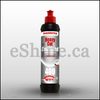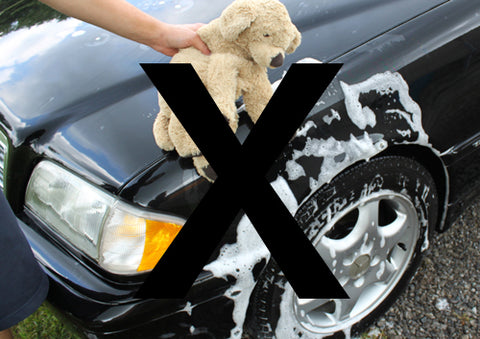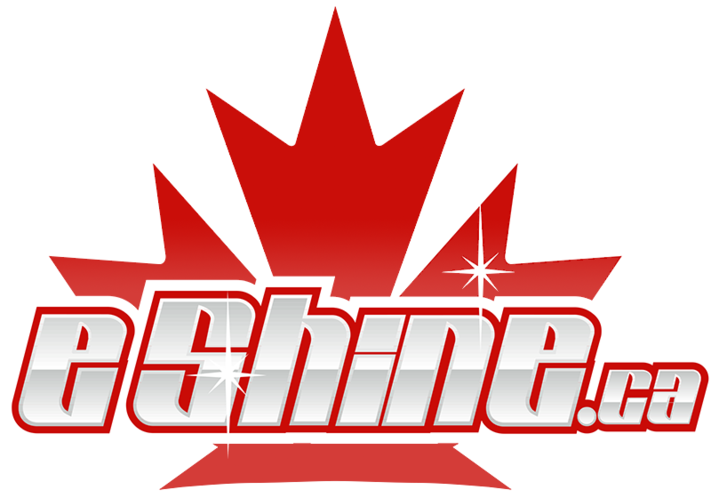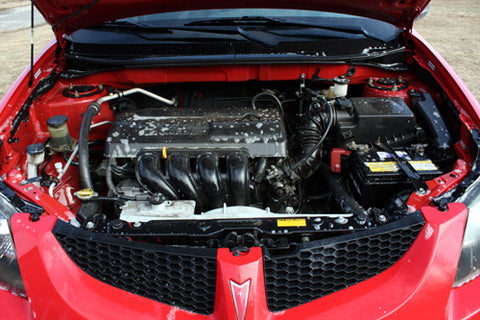Purchasing your first Machine Polisher can be intimidating, just the thought of using what looks like an angle grinder on your baby makes you shiver! So many pads, backing plates ... so many Compounds/Swirl removers…I AM CONFUSED. Let us make your first polisher experience a pleasurable one and put confidence into your decision!
We currently sell two very popular Dual Action Machine Polishers, the Porter Cable 7424xp and the very popular Flex 3401 Forced Rotation Dual Action.
Q: What Accessories do I need with the Polisher?
Porter Cable 7424XP - The Porter Cable Polisher does not come with the proper backing plate required for Velcro backed pads. You will need to also purchase a 5” Velcro Backing Plate in order to use interchangeable pads. We do sell this Polisher in a Swirl BusterKit that includes the proper backing plate and your choice of three CCS or Flat pads!
The Flex 3401 comes with a 6" backing plate and would only need 6.5" CCS or Flat pads.
CCS Pads?? What are they?
CCS stands for “closed cell structures". CCS is a popular new design by Lake Country. Conventional pads(Flat) can absorb polish too quickly which reduce polish and pad performance because most of the polish is trapped below the working surface of the pad. CCS technology solves this common problem by placing strategic patterns of partially closed foam cells.
The advantages of CCS pads are,
Slows rate of polish absorption – As discussed above, the pads are slow to absorb products and therefore the paint benefits from a longer working time. The same is true of liquid waxes and sealants.
Improves operator control – CCS pockets gradually release polish as needed by the operator. Since these areas are not absorbing polish, they serve as little reservoirs until the excess polish is needed.
Prevents pad skipping – CCS pockets reduce surface tension allowing the operator to run pad flat on a working surface. Basically, the CCS pockets break up the smooth surface of the foam to eliminate the sticking and skipping that occurs when two perfectly flat surfaces meet.
Creates less heat – CCS pockets provide several points where the foam is not completely touching the paint. This reduces friction and therefore heat generated between the pad and the paint.
OEM approved – OEM tests confirm CCS pads out-perform convoluted pad designs.
Now which pads do YOU need
First let’s talk about what pads do. Foam pads come in different compositions; they work in conjunction with liquid compounds, swirl removers, polishes, and waxes/sealants. Each pad only differs in texture providing more or less cut, sometimes no cut at all! The two work as a team and endless combinations of abrasion can be combined by changing the pad and liquid product.
Using Pads systematically - Are you wondering why one doesn't just use the most aggressive pads to achieve the best results? I mentioned earlier that the white is often used after using the yellow/orange pad. A pad combined with a compound or swirl remover removes defects via abrasives. A more aggressive combination will often leave a haze. This haze makes the surface look dull, foggy, or milky. This is perfectly normal. The dullness is caused by the abrasives and pad combination which actually removed a thin layer of paint, this dullness can only be restored by using a less aggressive combination such as a lighter swirl remover and a lighter pad (usually the white pad). You will very rarely be able to jump right from a Yellow/Orange pad to a pre-wax, polish or finishing step. This rule does not always apply to light swirl removal where the first pad was either white, black or blue Most of the time for light jobs you are able to either use the white pad with a one step product and finish or use the white pad with a pre-wax/polish then finish with the black or blue pad.
This Chart gives a full break down of Lake Country Pads, and their recommended uses.

STEP 1:
Compounding/swirl removal products are used for cutting.. Compounds are the most aggressive type of swirl removers dedicated for the most severe jobs including heavy oxidization and scratch removal. Swirl removers are the same as compounds but just a less aggressive type used for mild-medium oxidization and scratches/swirls. After compounding the paint should be swirl free, but will likely have a light haze.
Examples of Compounds:
|

Poorboy's Master
Compound
|

Chemical Guy's VSS
Scratch and Swirl Remover
|

Menzerna FG400
Compound
|
Because these pads will be used to remove defects the Polisher will be used on higher speeds such as 5-6 which is required to break down the product (See our swirl removal article for more info).
Step 2.
Polishing is the second step. Polishing “cleans” the paint. It brings back the shine and cleans up any light hazing left from compounding. It will often remove light oxidization and light swirls without the need to compound. Examples of some polishes are:
Step 3.
Protecting. The final step is protecting the paint. It does not make the paint clean or shiny, but adds a layer of protection from UV and seals the paint. A sealed surface is more likely resist staining from hard water or bird poop. The finishing pads are completely non-abrasive.
Example of Waxes:
Carnauba Waxes (P21S, Souveran, Natty’s etc)
Pure Sealants and Glazes (Klasse Sealant, Poorboy’s EX/EX-P etc)
Example of Sealants:
SEALANTS
Proper pad care and prep is an often overlooked step. Our blog on proper pad care can be just am important as proper polishing.
Sample plans of attack - Here are some sample questions we receive and how they would be answered, you will notice most of the time the pad selection is very similar.
Customer: I have a Black Honda that has moderate swirls that I would like to remove then Polish and wax the paint. The swirls are not terrible, just enough to bug me. I have heard great things about Optimum products so I would like to use them.
Our Thoughts: Ok, he/she has some swirls…automatically I recommend at least ONE Orange pad. He may not need it but it is better to have it if the white is too mild. Because I am going to recommend an Orange pad I know he/she will have to use the White pad afterwards to remove the haze so I recommend one White pad for Mild Swirl remover. I will then recommend another White for the Polish step. Depending on what type of product he want to use as a polish (A one step product for example) I will end there.
“Customer, I recommend the following procedure based on the condition you described,
Step 1. Optimum Compound on an Orange Mild Cutting Pad
Step 2. Optimum Polish on a White Polishing Pad
Step 3. Optimum Poli-Seal on a White Polishing Pad or Green Polishing/Finishing pad.
The above combination of pads is the most commonly recommended by us (One Orange, and Two White). We will also often recommend a fourth pad if the customer was going to use a two step product after swirl removal. For example, if the customer wanted to use Optimum for Swirl removal and finish off with Wolfgang the recommendation would be more like,
Step 1. Optimum Compound on an Orange Mild Cutting Pad
Step 2. Optimum Polish on a White Polishing Pad
Step 3. Wolfgang Pre-Wax Polish on a White Polishing Pad or Green Polishing/Finishing pad.
Step 4: on a Black Finishing Pad
Always make sure you have an ace up your sleeve, don’t order just white pads and a mild swirl remover because you think that should do, it is always a good idea to have an Orange Pad and a Compound just in case. It is better than having to place a separate order when you find your combination is too mild; chances are even if you have no need for it now you will use it in the future!
Customer: I just purchased a new vehicle and I want to treat it with a Polish and wax. I am not looking at any type of compounds right now; I just want to protect it.
Our Thoughts: He/she said they want to polish AND Wax, they did not ask for a one step product. This customer can get away with only two pads which are one White Pad for the Polish and one Black or Blue pad for the Wax. Because the majority of the time the customers are enquiring about a Swirl Buster kit which comes with three pads I will recommend a second White Pad because the White pad can be used for a light Swirl Remover if the future may need or it can act as a back-up to his polishing pad after extended use. We will use Klasse as an example
Step 1. Klasse All-In-One on a White Polishing Pad or Green Polishing/Finishing pad.
Step 2. Klasse Sealant on a Black or Blue Finishing Pad.
Don’t bring a bazooka to a knife fight - Always TRY the least aggressive approach first, only step up the pad or product if necessary.Don’t automatically assume you will need to start with an Orange Mild Cutting Pad and a Compound just because you have the products, try the White Polishing pad first on a spot and see if it will do the job; if it does you can save time by not having to compound! If the trial proves too mild, then step up to a more aggressive pad/compound.
Mix and match - As you gain experience you will learn you can mix and match products to achieve many levels of abrasion. For example, you may have just tried a White Polishing Pad with a Light Swirl Remover such as Poorboy’s SSR2.0. You found it was just not quite abrasive but feel jumping up to an Orange Mild Cutting Pad and SSR2.5 may be too much so you compromise! Try either the Same White pad with SSR2.5! Remember both the pad AND the product have their OWN abrasion level so mixing Hot and cold will make warm!
Do you need more information on selecting the correct products? Our Blog on common car care terminology might be useful.






































 Poorboy's Professional Polish
Poorboy's Professional Polish